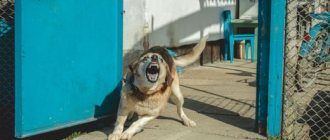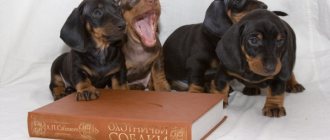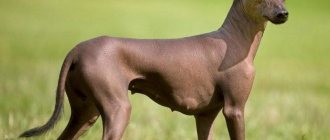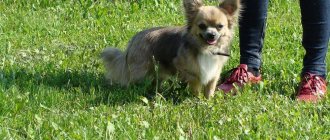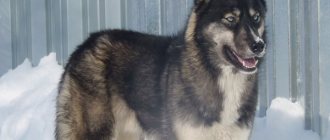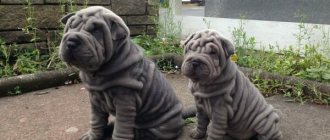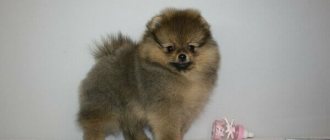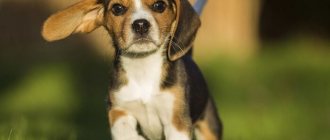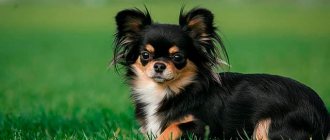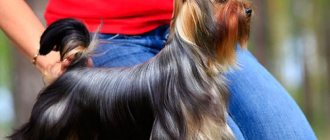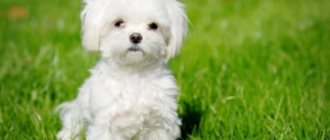The active, restless and adventurous beagle has long been a man's faithful friend, accompanying him through life and helping him in the hunt.
Cynology specialists distinguish five varieties of the breed - English, American, French, Irish and European.
Some breeders claim that there is also a Mini Beagle breed. But is this really so?
Let's try to find the answer to this question.
History of appearance
The first information about mini-beagles can be found in chronicles from the reign of Elizabeth I. There was a description of dogs that closely resembled beagles, but they were so small in size that hunters placed them in a special bag attached to the saddle of a horse. These kids did an excellent job of chasing hares, foxes and deer.
These miniature dogs were also often presented to royalty as a special sign of attention and a symbol of devotion. However, there is no direct evidence that these dogs were actually related to beagles.
Origin story
There are several conflicting versions of the origin of the Beagle Harrier. The word "Harrier" itself has ancient French roots and means "hunting dog", so it can be assumed that the earliest Harriers originated from Central Europe and are the result of crossing the Talbothound, Bloodhound and Basset Hound. Beagles were developed in Great Britain. By the middle of the 18th century, two types of hounds had already emerged for hare hunting: the southern hound (from which the modern harrier originated) and the northern beagle, but the ancestor of modern beagles was a dog bred in the mid-19th century on the basis of northern beagles, hounds and other breeds.
The Beagle Harrier was developed in France in the 19th century by crossing a Beagle and a Harrier to produce a medium-sized dog while retaining its hunting qualities. It is unknown to whom breed lovers should be grateful. The authorship is often attributed to Baron Gerarron, a French artist with Italian roots, but this version seems implausible to many.
Usage
The Beagle Harrier is used to hunt fox and hare. Best suited for working in a flock. The dog is very fast with an excellent sense of smell, works well on any terrain, and is not afraid to walk through dense thickets. Can also be used for hunting deer, rabbit, and roe deer. It can follow a blood trail, but recently it is increasingly considered as a companion for active people. Poorly suited for various types of cynological sports, except coursing.
Beagle Harrier is a tracking hound. Divorced with performance tests.
Marriage or breed?
Wanting to get a miniature copy of the beagle, people turn to unscrupulous breeders who claim that such a breed really exists.
Most often they show retouched photos or photos of teenage beagles, whose height does not exceed 20-30 cm. This is nothing more than a lie and a trick to sell a standard beagle , which will definitely grow to 33 or 56 cm at the withers, depending on the type of breed.
CAREFULLY!
There is no such breed as the Mini Beagle!
Height below standard is a disqualifying sign, meaning that the dog will not be allowed to further breed and participate in exhibitions. Moreover, dwarfism is fraught with problems of physical and mental development.
Character of dogs
Before you get a beagle, you should familiarize yourself with its basic character traits.
They are the same regardless of the breed type:
- activity and energy. The Beagle is full of vital energy and, like no other breed, needs activity and physical exercise. Get ready for long walks, get toys in advance that your pet will occupy himself with while you are not at home. He shouldn't be bored. Otherwise, he will find something to do for himself, opening cabinets, turning things over and chewing furniture;
- observation and curiosity. Beagles are very attentive and easy to interest. They engage in games with other dogs, children or their owner with all adventurism;
- compassion and an optimistic attitude. Dogs of this breed subtly sense the mood of their owner. They know how to amuse and make people laugh by deliberately doing something stupid;
- lack of aggression and friendliness. Beagle likes to make new acquaintances; he happily greets guests, allowing himself to be petted. He is the first to make contact and has an extremely difficult time tolerating ignorance and loneliness.
Expert opinion
Kozhevin Semyon Kirillovich
Expert dog handler.
Dogs of this breed need authority. It is very important for them to see a leader and mentor in their owner, so only an experienced breeder can cope with the beagle’s character. This is a very active and inquisitive breed that needs physical activity and training.
Character and behavior
By character, temperament and behavior, the Beagle Harrier is a typical hunting dog, which is adapted to work in a group and alone. She has a gentle character, energetic, friendly, and never shows aggression towards other dogs. The Beagle Harrier becomes very attached to its owner and other family members. Gets along with domestic cats if he grew up with them. At the same time, the neighbor's cats will never become his friends. The Beagle Harrier gets along well with children of all ages. Very curious and mischievous. He is often careless and gets into trouble.
First of all, the Beagle Harrier is a hound dog with a well-developed sense of smell, a pronounced pursuit instinct, toughness, passion and anger towards the animal.
Owners say that Beagle Harriers have a great sense of humor, they are known for their antics and pranks, are very sociable and would prefer not to be the only dog in the family. Loud barking will warn the owner about everyone who approaches the house, animals and people. They will greet acquaintances with a joyful wagging of their tail, they will quickly find a common language with robbers and help them find jewelry. In general, Beagle Harriers are very talkative, they will communicate with other dogs and people using a variety of sounds, moans, sighs, whines, grunts, mumbles and of course barks.
The Beagle Harrier is a born hunter, but this does not prevent him from being a wonderful family dog and companion.
Advantages and disadvantages
The advantages and disadvantages of representatives of this breed can be divided into two categories - mental and physical.
Mental
Pros:
- not aggressive towards people and other dogs;
- loves children and playing with them;
- attached to the owner and loves to spend time with him;
- feels the mood and knows how to cheer up;
- adapts to any conditions, be it an apartment, a country house or an outdoor enclosure.
Minuses:
- cannot stand loneliness. If you are constantly away from home and leave your beagle alone, his temperament will quickly deteriorate. He will start chewing furniture and shoes. If the situation is not corrected in a timely manner, his behavior will remain inadequate;
- stubborn and overly independent. Because of this, problems with training constantly arise. Can go quite far from home, following the trail of a mouse or squirrel;
- may be intrusive and try to draw attention to himself when he sees that the owner is passionate about someone or something else;
- trusting and easily makes contact with strangers. He will easily follow strangers if they call him. Because of these qualities, he will not be able to become a good guard and defender.
Physical
Pros:
- loves physical activity and walking, which makes him a good companion for sports enthusiasts, travelers and tourists;
- clean and does not drool, and also does not have a specific dog smell;
- practically does not shed and leaves no traces of fur on furniture.
Minuses:
- tends to overeat because he doesn’t know the norm. Often has problems with excess weight;
- does not get along well with cats and rodents due to its hunting instincts.
IMPORTANT!
Be extremely careful when walking your beagle! Dogs of this breed often pick up dirty and missing food from the ground, which can lead to poisoning and inflammation.
How does a beagle behave?
- the beagle destroys the house (well, you remember, game, game and more game. Plus a love for independently arranged comfort);
— a beagle on the street always wants to run away (the Holy Grail is waiting for him. Or, at least, some kind of rabbit);
— the beagle doesn’t want to learn commands. He is independent, but the owner very often demands stupid things!
- the beagle is not funny. The beagle wants to go hunting. Preferably 24/7.
Therefore, the life of our family began to flow very according to Zhevsky: in the morning - a quality run around the area. In the afternoon - instead of lunch - a mini jog. In the evening, another good run and a session with the dog trainer, who, sighing languidly, explains that in a year or two everything will work out, and the beagle will be obedient. Maybe.
By the way, my husband started working a lot. After all, this is good for the knights in the castle: they need to do repairs in the kennel - increase the tax and do it. And our husband has to do everything himself. They also turned into a family of ninjas, how else can you slip past the neighbors who don’t like beagles. Because the beagle, in the absence of its owners, did not find the hunting horn and instead calls its owner, who has gone somewhere unknown, to hunt on his own. And the beagle's vocal abilities are oh so good. They'll do just fine instead of horns.
But relations with my family have improved. My brother's sister and her hyperactive nephew became the most welcome guests. During the day of communication between the nephew and the beagle, the latter gets so tired that he can sleep the entire next day. And this, you know, is real happiness.
You might say that we are exaggerating something. Well, if only a little. You will find all this in an ordinary dog encyclopedia, if you read it correctly. So, no one except hunters should have a beagle? Why, it’s possible.
Here is a real review about the Beagle from our Yumama Tatyana (nickname Oper), the owner of the most beautiful Bingo:
The beagle appeared accidentally. I haven't read about the breed at all. I accidentally looked into the topic about beagle puppies, some dog god immediately gave me a photo of my beagle son. And it sank and rang in my head. When we were taking the puppy home, my mother read about the beagle and immediately called - he would dig, howl and chew. This is true.
The list of Bingo hunting trophies can be listed endlessly. The most memorable one: shoes before the New Year's corporate party. But insoles are still the subject of Bingo’s fetish. Guests can come in shoes and leave in the same shoes, but without insoles. He will steal and hide.
This is a straight breed quality - to steal and hide. A loaf of bread may be buried in the sofa. I found a hoof under the pillow. Raffaello stuffed the box under everyone’s pillows.
But I still love him: for the golden character of a pacifist. For a cheerful disposition at any time of the day. For an appetite that never ends on a plate of food, but despises sausages. For the ears, which you can stroke at night and sleep even more soundly, for the nose, which buries itself in your legs and, sighing, it settles more comfortably somewhere on you. And he is trainable, any shepherd dog will envy our “nearby”! But Bingo won’t do anything, he first thinks and then carries out the command.
So a Beagle is your dog if you:
— ready for long daily walks;
— are ready to spend a certain amount and time on training, and at the same time have remarkable patience;
— are prepared for the damage that will inevitably be caused to your apartment.
Otherwise, it's better not to. Buy the Encyclopedia of Dogs. There, besides the beagle, there are about 400 other breeds.
And here is the promised video (watch from 1:13):
Photos in the article: Tatiana (nickname Oper), website pexels.com
Dimensions and weight
According to the standard, the height of adult dogs of this breed varies from 33 to 56 cm, and weight from 13 to 27 kg.
The smallest representative of the breed is the European Beagle, and the largest is the Irish Kerry.
Most common diseases
Despite the fact that beagles are distinguished by good physical health and good endurance, some diseases are more common in them than in representatives of other breeds.
For example:
- obesity – occurs due to the fact that the dog uncontrollably absorbs food;
- ear infections - appear due to the specific shape of the ears, which often drag along the ground when the dog sniffs something;
- epilepsy - often occurs in representatives of hound breeds;
- hypothyroidism - expressed by deterioration of the coat, swelling and problems with reproductive function.
NOTE!
You need to show your pet to the veterinarian at least twice a year, even if visually everything is fine with him. Catching diseases early can save your dog's life.
A dwarf beagle is a dog shorter than 33 cm at the withers. This phenomenon is a pathology, not a variety.
Such a defect can be identified even in puppyhood - by a pronounced transition from the forehead, bulging eyes, a pointed and slightly upturned muzzle, unhealthy bones and crooked paws.
Appearance
The Beagle Harrier is a medium-sized dog, agile and energetic, perfectly balanced, strongly built, well-muscled and short-haired. Gender is expressed. Height at withers 45-50 cm.
The head is of moderate size. The skull is very voluminous and wide. Stop moderate. The muzzle tapers slightly towards the nose. The bridge of the nose is straight. The lobe is well developed, black in color. The eyes are dark in color, open, with a lively, intelligent expression. The ears are short, moderately wide, set at eye level, hanging down close to the skull. The ends of the auricle are turned outward, and in the middle part they form small folds.
The back is straight and short. The loin may be slightly convex and strong. The chest is deep. The ribs are moderately rounded, the false ribs are long. The stomach is not very tucked. Legs straight, parallel, strong. The paws are strong, tightly packed and short. The pads are elastic and thick. The gait is stable, energetic and elastic.
The coat is not too short, lies close to the body, and is thick. Tricolor color:
- Red with white and black saddle. The transitions between colors are not too sharp. Tan marks range from reddish brown to dark fawn.
- Red with white and gray tan.
You can see what a red-gray-white beagle harrier looks like in the photo in the gallery below.
Care and maintenance
To make both you and your pet feel comfortable, adhere to the following five rules of keeping :
- The dog should have its own place. No matter how much you would like to take the puppy into your bed or warm it up under a blanket on the sofa, you shouldn’t do this. Set up a cozy place for him, laying bedding away from drafts and heating devices, and train your pet to rest there. Otherwise, the dog will sit and lie wherever it pleases;
- Walks and physical activity are required every day. Beagles need to run and play outside every day to satisfy their hunting enthusiasm and burn off their energy;
- don't forget about hygiene! Despite the cleanliness of the breed, do not forget to periodically clean your pet’s ears and eyes, and also wash your paws after walks. Bathing procedures are carried out no more than 2–4 times a year using special dog shampoo;
- visit the veterinarian! To maintain health, it is necessary to carry out timely vaccination and deworming. The dog must be treated for worms three times a year, for ticks - twice. The first procedures can be performed at the age of 3-4 months;
- training from the first day as a guarantee of peace. As soon as your pet has crossed the threshold of your home, start training. Start with the basic commands “can”, “cannot” and “place”, gradually adding more and more new ones.
History of the Beagle Breed
Once upon a time there lived a medieval beagle who was looking for the Grail. And then it occurred to someone smart that it would be funny if the entire pack of hunting dogs fit in a basket. And the beagles decreased sharply. Now imagine. When hunters left, they stuffed them into their gloves, baskets and pockets. They even began to be called Glove Beagles - that is, glove beagles. During the hunt, they were shaken out of their gloves and baskets, and a countless crowd of beagles rushed after rabbits, hares, and other small things.
But with mathematics the medieval knights were so-so. And when after the hunt they collected their flock into baskets and gloves, they forgot some of them. Those who were forgotten had to find the way to the castle themselves... or - live in the forest as you wish. Because the beagles became very independent, life forced them.
And it seems to us that it is the descendants of these forgotten ones who have survived to this day. Because anyone would envy the sophistication of a beagle’s mind when it needs something. If you don't believe me, watch the video at the end of the article.
And the beagles didn’t really like or remember their owners: why, if at any moment in the forest they could forget, and then, lo and behold, another castle would turn up. So there is also no need to talk much about attachment to the owners of these dogs. More precisely, this way: beagles love their owner very much until they smell the game. And then - how it turns out. Maybe they will continue to love this same owner, or maybe some other one.
And another feature of modern beagles lies there - in history. Where did hunting dogs live? That's right, at the kennel. In a crowd. And arrange yourself there as you wish, to the best of your arrogance and understanding. Gnaw here, steal straw from there. This is how modern beagles behave. Set up a more comfortable place in your two-room kennel. Better on the couch. Preferably covered with the innards of the chair. It would also be nice to have a hole in the door so that there is a view.
In general, we have outlined the main milestones in the history of the Beagle. It's no longer interesting. They were made larger, faster, slower, in general, they were changed in every way to suit the needs of hunting.
So let's get back to our hypothetical family of newly converted beagle owners. The affection with eyes and ears quickly ended. And the moment of epiphany came.
How to feed?
As mentioned earlier, the beagle is prone to overeating and gaining excess weight, so the owner must tirelessly monitor his diet. The daily norm should be divided into 3-5 meals, adhering to the regime.
It will be easier to train your pet to eat on a schedule if you remove the bowl each time after the dog has eaten his portion.
The dog should have separate bowls for food and water, preferably made of stainless steel. To prevent your dog from experiencing physical discomfort during meals due to neck stretching, buy a special stand and adjust it as the puppy grows.
You need to feed your dog strictly after walking and training for two reasons:
- having eaten, she will lose enthusiasm for following commands;
- The dog loves to run and jump during street games, which means... that the risk of volvulus increases.
Price range
Since the Mini Beagle does not officially exist as such a breed, we will tell you how the price for representatives of this breed as a whole is determined.
There are only 3 classes into which purebred dogs can be divided:
- pet (pet);
- brit (for breeding);
- show (for exhibitions).
The latter are the most expensive.
In the CIS countries, prices for beagles vary from 5,000 to 25,000 rubles.
How to choose a puppy?
After that. How did you decide on the class and gender of your future pet? It's time to go to the nursery.
After meeting the owner, check the following important points:
- In what conditions are the bitches and puppies ? It should be a clean place without any traces of excrement or food debris. It is acceptable if dog toys are scattered;
- what veterinary procedures were performed. This question is worth asking both about puppies and their mother, since many diseases are transmitted to offspring through mother's milk;
- age of puppies. The optimal age for purchasing a puppy is 1.5–2 months. He is already physically stronger, knows how to feed himself and easily makes contact with people;
- puppy's appearance. A healthy puppy is active and inquisitive. His coat is shiny, his eyes and ears are clean, his nose is cold and wet. The bite is correct, scissor-shaped. The paws are strong with slight seals on the knee joints;
- color Beagles can be either two-color or three-color, but it is worth noting that until 2.5 months, the coat of most puppies appears black and white, with barely noticeable red tan markings.
Read more about how to choose a Beagle puppy here.
Choosing a puppy
Beagle Harriers are rare even in France. The number of these dogs is so small that some even consider this breed to be endangered . There are only a few individuals in our country, and it is almost impossible to buy a dog of this breed. You can buy a puppy in your historical homeland; there are also several nurseries in other European countries and in the USA. You need to take a baby from proven, reliable breeders who have positive reviews and a good reputation.
It must be remembered that a mestizo (cross between a Harrier and a Beagle) is not considered a purebred animal.
It is very difficult to visually distinguish a beagle harrier puppy from other similar breeds, especially beagles. A guarantee of purebredness will only be the presence of appropriate documents (puppy certificates, pedigrees of parents, field diplomas, etc.).
Beagle Harrier puppy is difficult to find
Dark tan marks on puppies may turn red with age.
Price of a puppy of this breed
The cost of French beagle puppies in European nurseries ranges from 1–2.5 thousand euros. The specific amount depends on the thoroughbred lines of the parent pair and the prospects for the upcoming exhibition activities.
You can find tempting offers on various services for selling animals. The price of a supposedly purebred puppy may not exceed 15–18 thousand rubles. In this case, you can get a pet that is completely devoid of all breed characteristics (in terms of character and temperament), as well as hunting talents. The reward will be only external resemblance.
